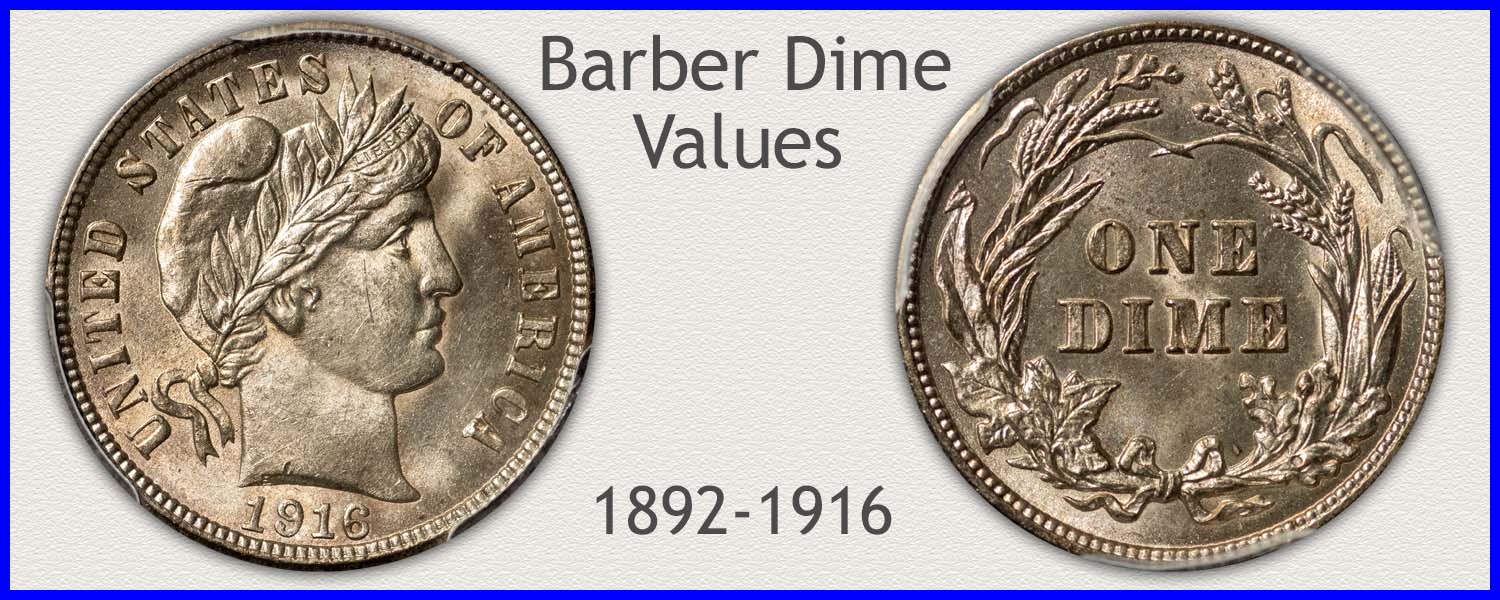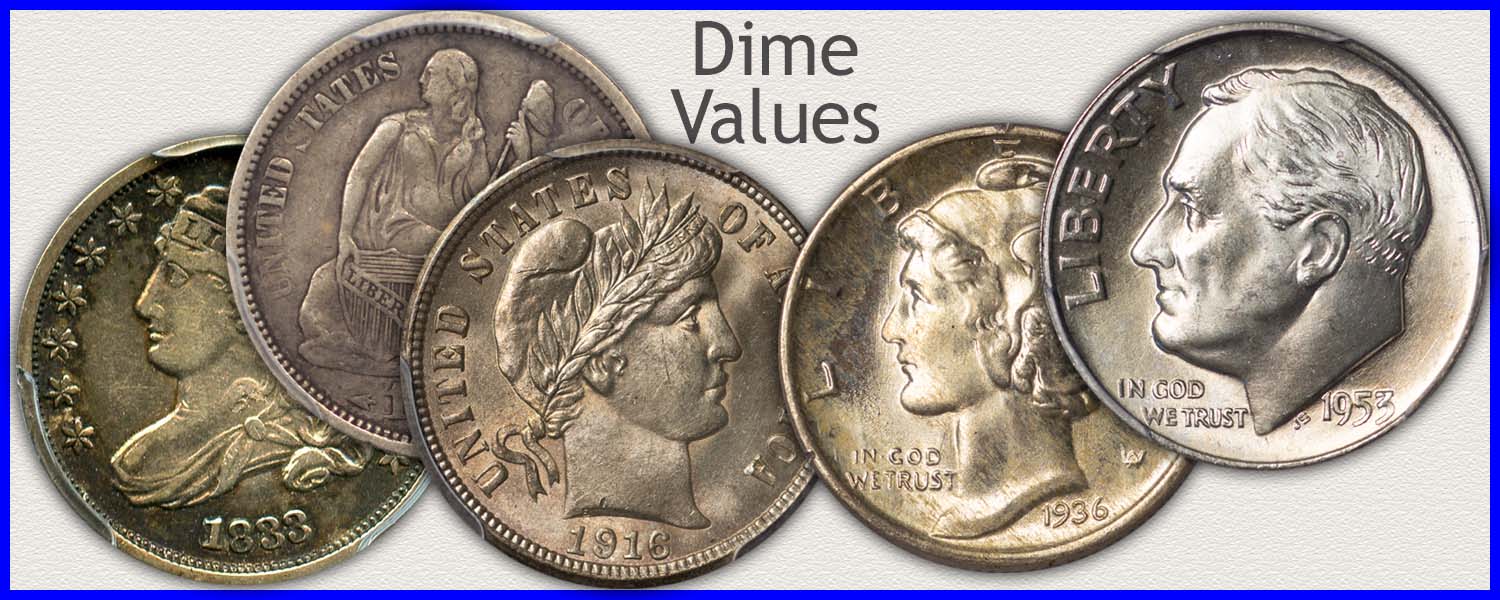Coin Values Moving with Precious Metals: Up-Dated 1/19/2026: Gold $4670 | Silver $93.29
1913 Dime Value
A few key elements are identified and used to determine 1913 dime value.
Listing of values on the chart are refined by the date of the coin, the mint striking the coin, and the coin's overall condition. Each of these is important to collectors, the hobbyist creating a demand for old coins.
Proceeding through a step-by-step process evaluates the important elements of the coin. Confirm, date, mint issue, and condition to narrow how much your dime is worth.
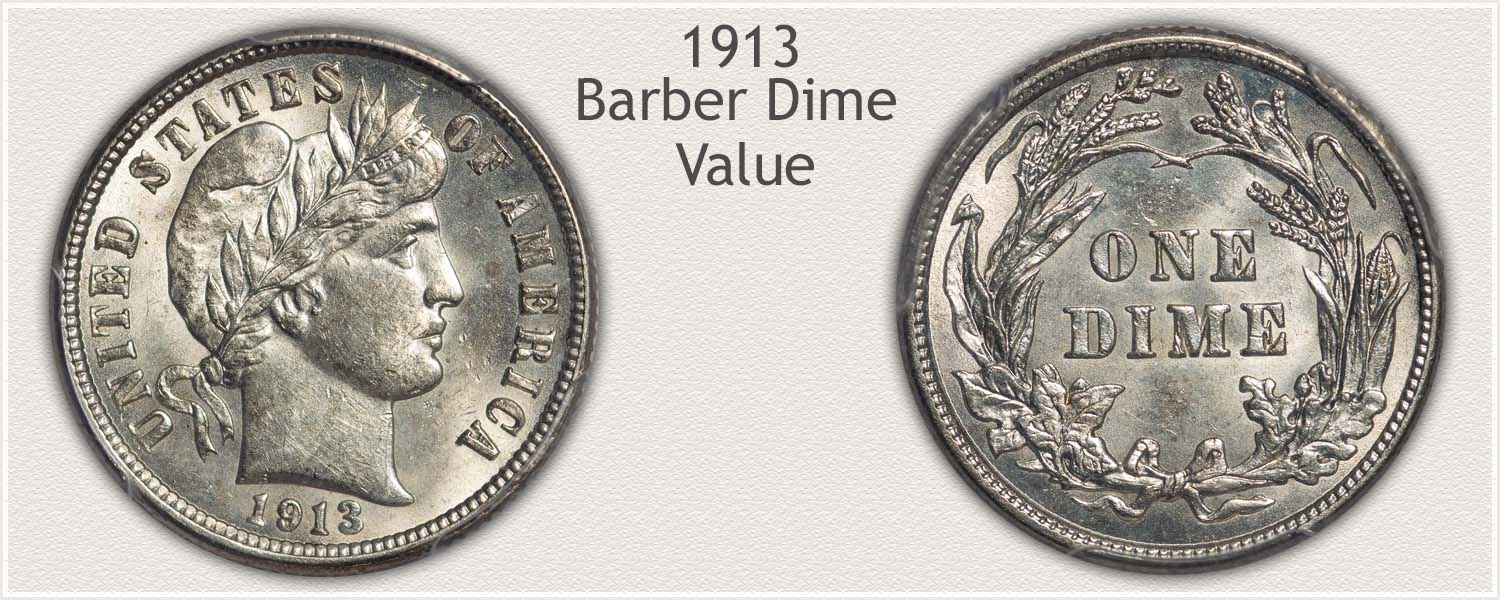
Steps Leading to Value:
- Step 1: Date and Mintmark Variety - Identify the in-demand date and mintmark combinations of 1913 dimes collectors are searching for.
- Step 2: Grading Condition - When describing the condition of a coin, dealers and collectors do so by referring to the piece's grade. Different grades of a coin are shown in Step 2.
- Step 3: Special Qualities - High quality in all states of preservation adds value to Barber dimes. Damage and distractions are very common on vintage coinage.
| 1913 Dime Value | ||||
|---|---|---|---|---|
| Condition of Coin | ||||
| Date | Good | Fine | Extremely Fine | Mint State |
| Barber Dime Values Updated | 1/19/2026 | |||
| 1913 | $11.85 | $13.81 | $25 | $121 |
| 1913 S | $48 | $105 | $269 | $917 |
Listed are a range of wholesale values for conservatively graded Barber dimes. Use the steps to grading to help narrow the ranges found on the chart.
Step 1: | Date and Mint Recognizes Scarce Issue
1913 Dimes and Premium Collector Variety
By determining the exact mint that struck the coin, value of these old dimes is narrowed. With two mint issues of 1913 dimes, each with very different value ranges, a close inspection is required.
Branch mints at the time placed a small mintmark on all of their coinage. In 1913 these marks separate the common from the scarce dime. Illustrated is the marks and location to verify exact date and mint combination.
1913-S Barber Dime
"S" Mintmark on Reverse: San Francisco Mint Struck the Coin
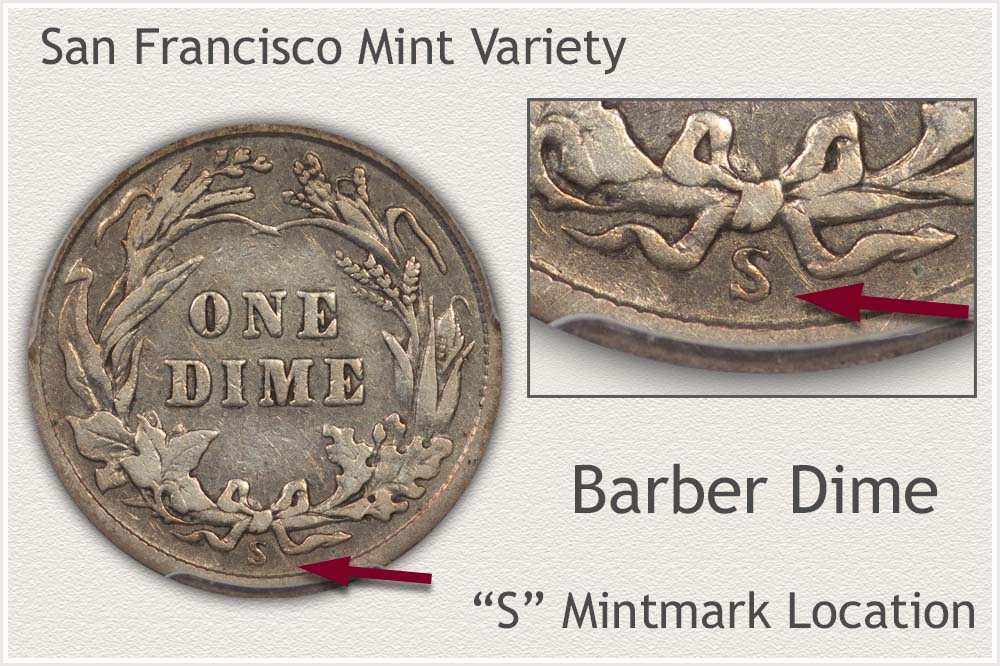
A coin's date and mint variety are important to include in a complete description. 1913 is notable among collectors because of the San Francisco issue and its rarity. Just over half a million 1913 San Francisco dime produced, 510,000 struck. This number became the second lowest "S" mint dime of the Barber series. Because of the limited number and attention today, these are highly valuable.
The "S" mintmark on the reverse confirms that the coin was issued by the San Francisco mint. Immediately under the wreath, the mintmark is clearly visible between the rim and the wreath. A scarce collectible in any condition, and in high demand.
1913 Barber Dime
No Mintmark on Reverse: Philadelphia Mint Struck the Coin
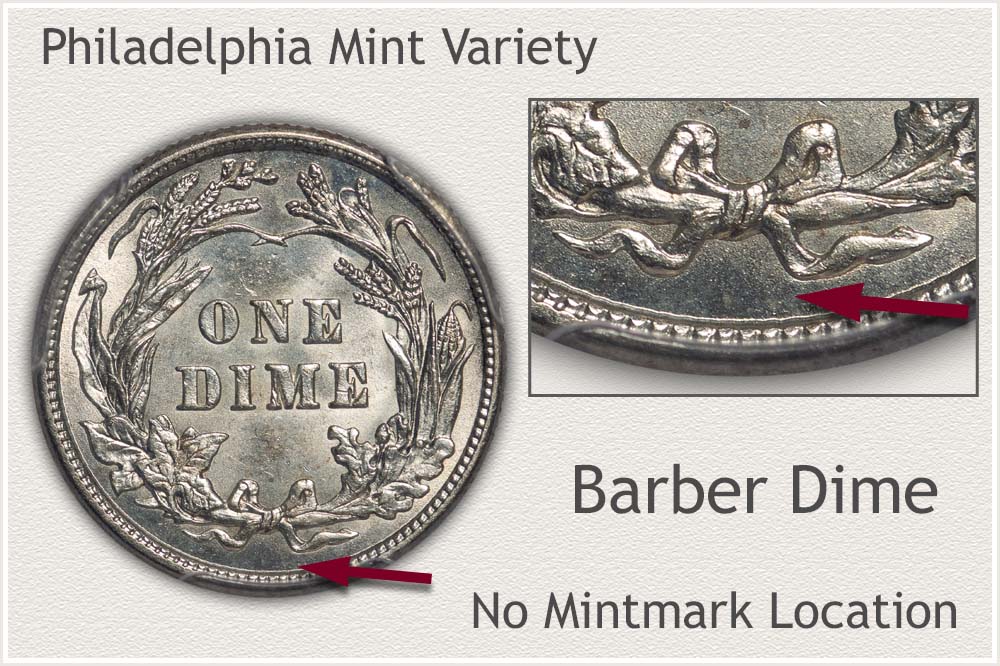
The ending years of the Barber series is characterized by the Philadelphia mint's high production of dimes. A mintage total of 19.3 million dimes for 1913 is the upper range of typical years reported by Philadelphia during the series.
The coins considered as collectibles are in Extremely Fine grade and higher and listed at values above their silver worth. Well-preserved examples enjoy high demand by collectors.
No mintmark is used on the reverse of Philadelphia issues. An empty space just below the bow on the lower rim indicates the Philadelphia variety.
Step 2: | Grade Surface Preservation to Identify 1913 Dime Value
Condition is Key to Finding Scarce and Collector Quality
Inspecting 1913 dimes closely helps judge their condition and identify a high-quality example. Many examples remain today heavily worn and with low eye appeal. Finding key elements in the design visible indicates a coin of above average quality.
Judging quality compares the surface condition to a range of images representing grades to find a match.
Mint State Grade
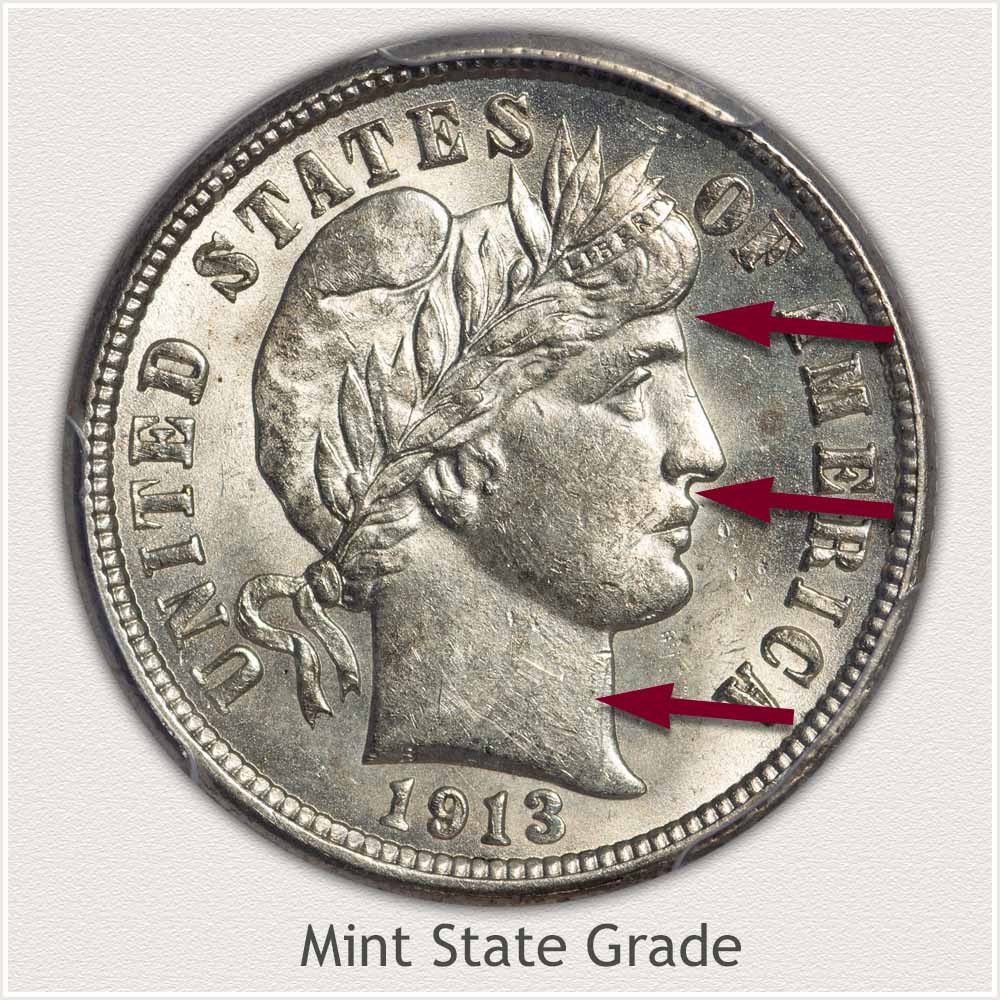
Mint State: A featured coin in any Barber dime collection is one in Mint State condition. Defined as no-wear to the surface, these coins display complete and intact design elements. Adding to their quality is a complete covering of luster, creating the shine noted on mint state grade dimes.
Luster is a delicate, fine grain of the metal resulting from the striking process as metal flows into the recesses of the die. This fine texture is quickly removed when worn. Inspect the cheek of Liberty to confirm luster covers the entire area. Compare the neck, another open area, with the cheek, both are similar with a shine of undisturbed luster. If wear is present, silver becomes dull, losing shine and often with a color change to a soft grey on the highest areas.
The glow of luster also covers the high, small areas of mint state dimes. Inspect Liberty's eyebrow closely, a high-profile feature. The raised area of the brow remains lustrous, with no dulling and smoothing of the metal.
Bright bands of luster flow across the surface as a mint state coin is tilted under a light. A high-quality coin with a premium value.
Extremely Fine Grade
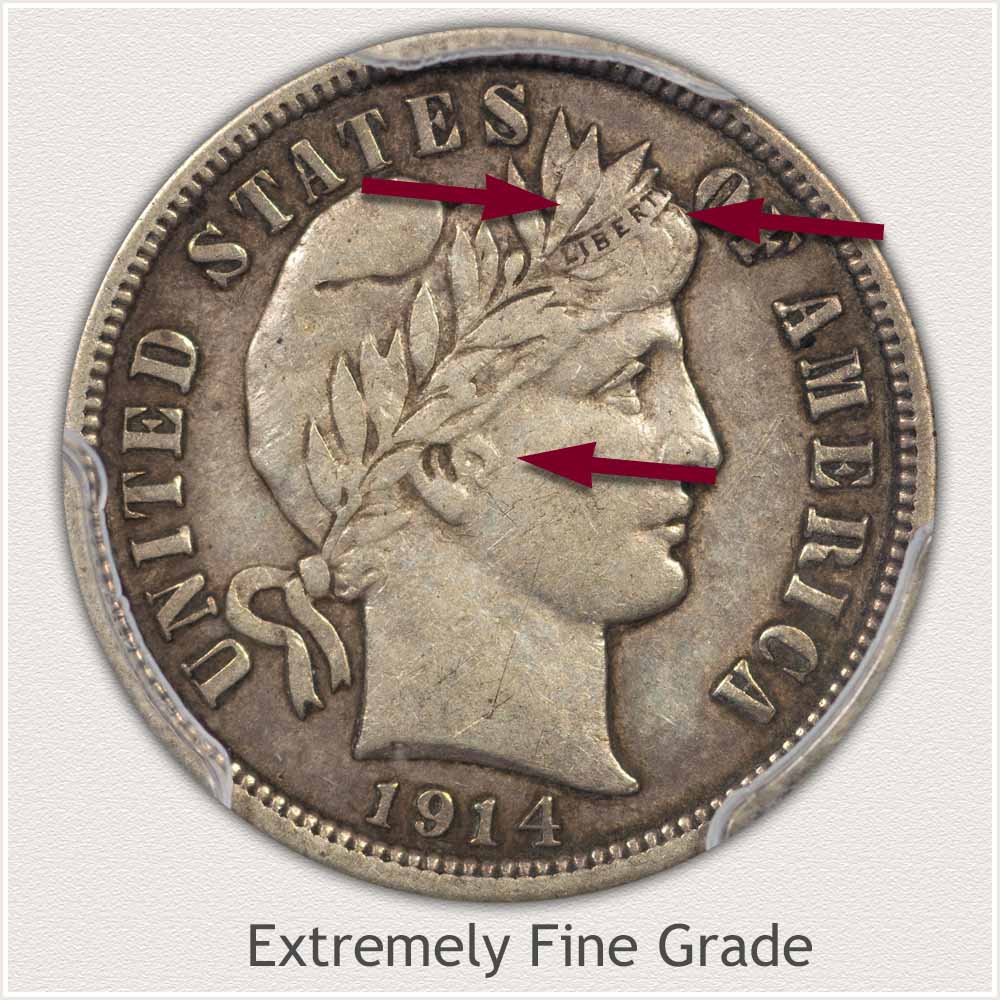
Extremely Fine: In Extremely Fine condition, a Barber dime has light wear restricted to just its highest points. A few small features are identified to help in qualifying the coin for the grade.
These mildly circulated dimes with just minor wear appeal to collectors. An affordable grade to begin a collection of the Barber series. A high-quality dime must have specific details plainly visible.
A ribbon with the letters "Liberty" is a feature within Liberty's hair. It is very important that both the top and bottom edges of this ribbon are visible in order to achieve an Extremely Fine grade. The ribbon's strong, defined edges indicate that only minor wear is present.
The silver's overall look has changed to a soft grey color tone. Original luster is lost due to normal wear. Note, there is a fine hair curl in front of her ear. This small detail fades quickly and, when visible, contributes to the coin's high collector grade.
Overall, the coin is crisp and detailed. An appealing collector coin, just small areas of wear, while the fields are lightly worn and slightly smooth.
Fine Grade
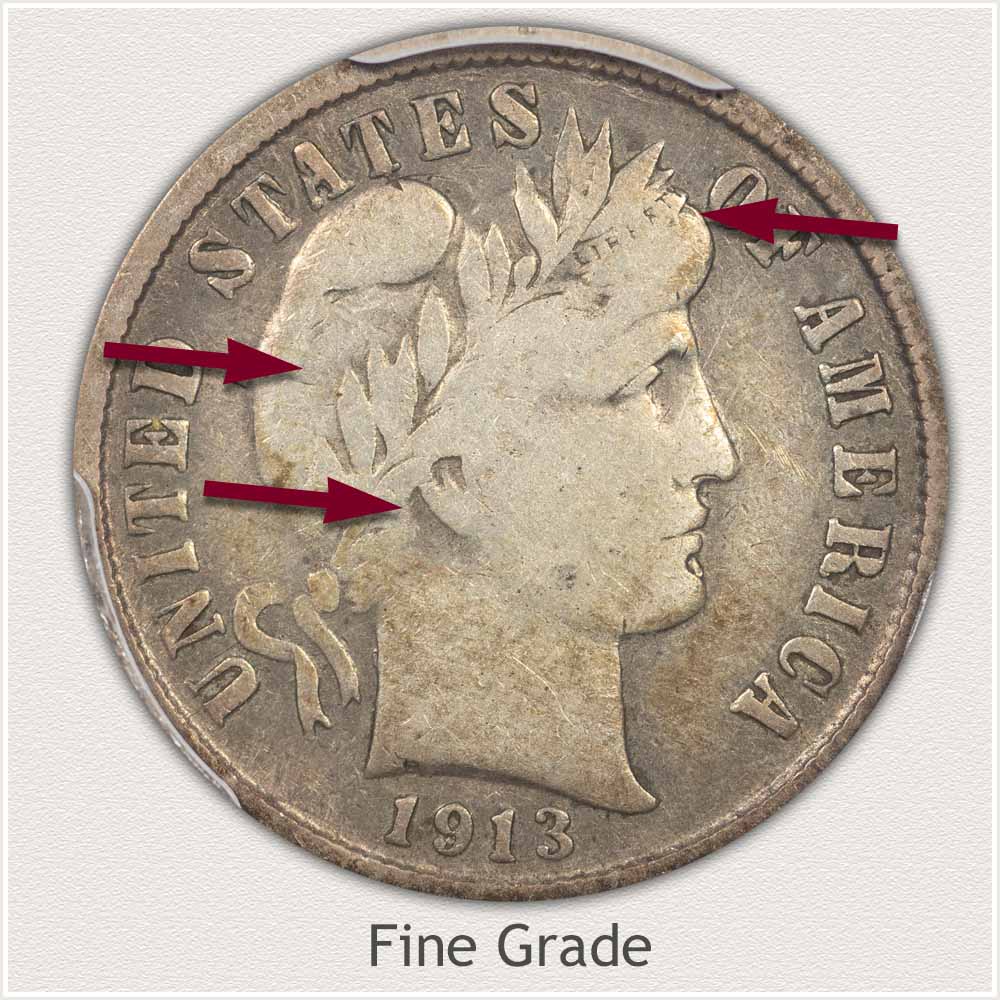
Fine Grade: Moderate wear leaving many small and major detail showing defines a Barber dime in Fine grade. These coins at first impression show wear, however, most of the major design remains.
A fine condition coin has ample detail within the leaves of the Laurel wreath and remnants of Liberty's hair is distinct. Firstly, all upward pointing leaves are completely outlined and very defined. Although the lower leaves are beginning to merge with the hair, a few small details separate the leaves and hair.
A key element to the Fine grade is all letters of "Liberty" are visible in the ribbon representing the headband. This detail is often weak, with some letters faint and incomplete. Bold, clear letters is a strong Fine grade dime.
Next, look at Liberty's ear, it has become worn with visible flatness. Enough detail remains to leave a separation of the ear from the cheek. A defined ear merging only at the top with the hair is a moderately worn example and candidate for the collectible fine grade.
Good Grade
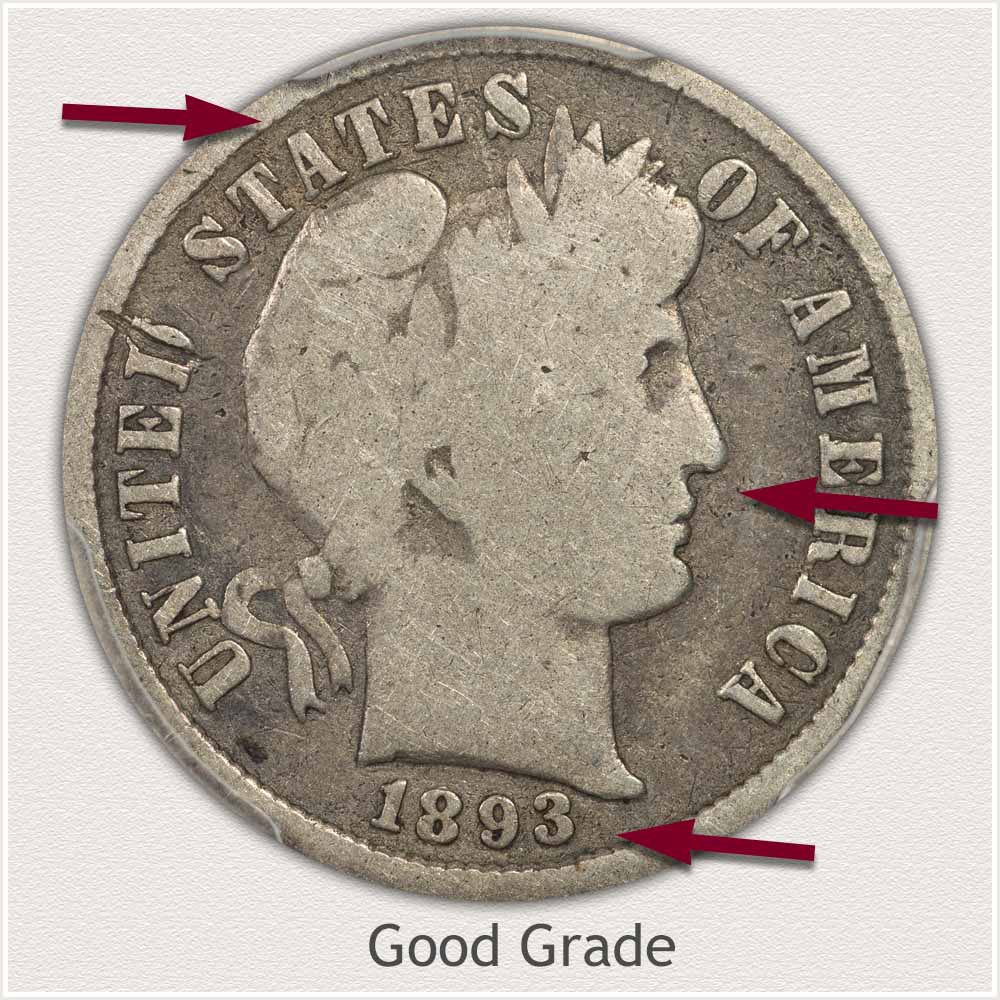
Good Grade: Barber dimes that have been widely circulated with few design details left are regarded as good condition. Only the outlines of the major elements remain, few central features are visible.
The Barber design's strong relief of Liberty is one of its outstanding characteristics. Unfortunately, in this condition, most finer details of the portrait are well worn, but a complete outline remains. This provides an added appeal to the grade with the portrait well raised from the field.
Additionally, the presence of a clear date adds to eye appeal, and all letters along the rim are full. There is no merging with the rim helping confirm the quality and grade. Note also, there is no widespread fading of the portrait and letters into the field. A nice coin, lacking any large marks, and giving the overall impression of worn, but not "worn out".
How to Video: Grading Barber Dimes
Confirm a narrow grade by expanding the grading process. When placing a value on these Barber dimes, condition is a significant consideration.
Video, Images and Descriptions | Grading Barber Dimes
Step 3: | Special Qualities a Close Look
High Quality in all States of Preservation Adds Value to Barber Dimes
Base value of Barber dimes begins with the silver content found in all. Each is 90% silver worth $11.85 as of $11.85 as a bullion piece. A large market trades these in bulk, with values rising and falling with the price of silver.
Premium values of Barber dimes, found in the collector market is based on qualities of the coin. Date, mint variety, and condition. Additional qualities are also considered concerning the state of preservation of a coin's surface.
A judgement of surface quality includes identifying the presence of large nicks/scratches | cleaning | and storage damage. Any of these effectively lowers quality below collector status and into bullion quality.
Damage and distractions are all common on vintage coinage. Nice quality is a special, premium condition.
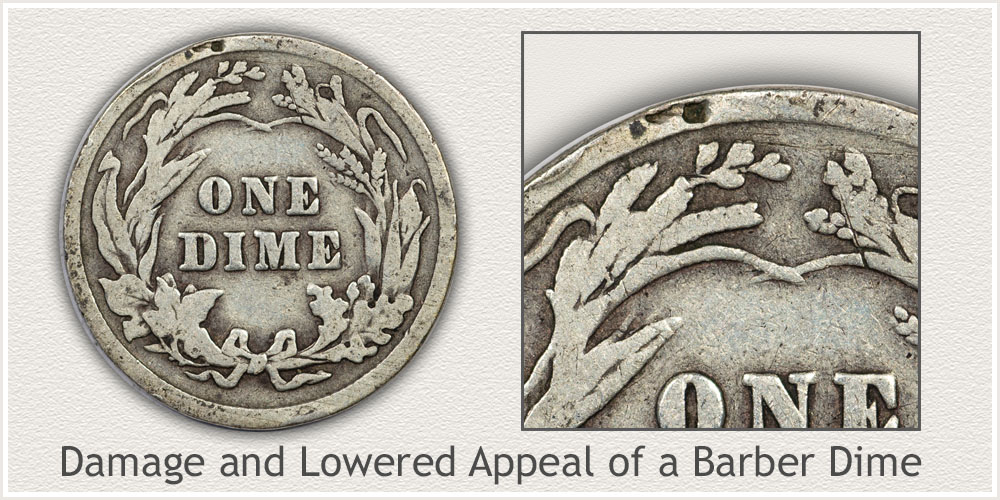
A small gouge on the upper rim becomes very distracting once noticed. A full inspection to confirm quality includes detecting these deep forms of damage. Although confined to the rim, many collectors pass on this type of coin in favor of better examples. Demand is lowered along with value.
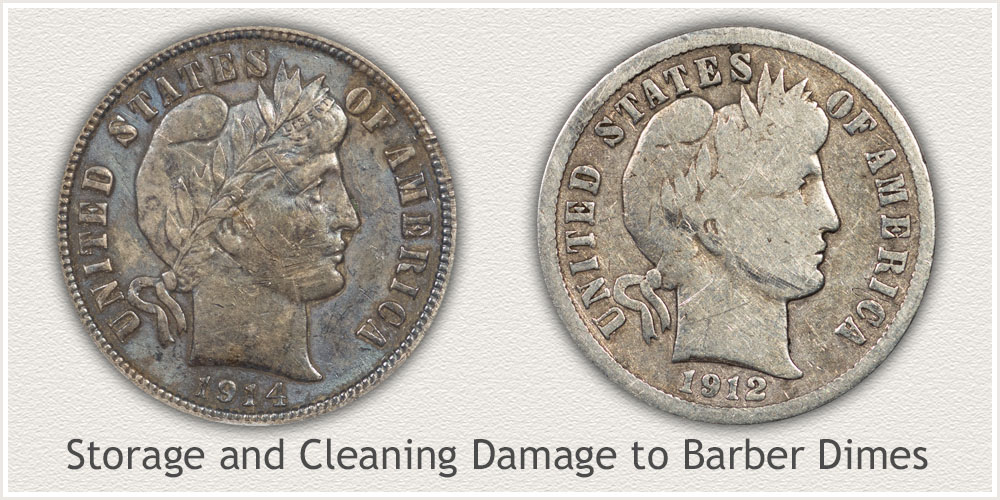
A very dark silver coin indicates it was left unprotected from humidity in the air. This Barber dime was housed and stored improperly, allowing deep toning and corrosion to take place. Oxidation has darkened the color and damaged the coin to the point it is unappealing and hard to appreciate the design elements.
A somewhat "shiny" and unnatural appearance is the first impression of the example Barber dime. This coin was cleaned and brightened in the past, leaving the noticeably disturbed surfaces. A cleaned coin is quickly noticed when in this condition and is discounted below collectible quality.
A quality check to confirm mark free surfaces, no evidence of cleaning, and no corrosion damage quickly finds the type of coin with potential collectible premium.
References
U.S. Mint. 1914 U.S. Mint Annual Report https://nnp.wustl.edu/library/book/514127
Coin Values | CoinStudy Articles
Date by Date
In Depth Barber Dime Values
1892 to 1916
Barber Dime Value | Dates and Mints Listed
Discover the different dates and valuable mintmarks. Use the step by step method to an accurate identity and value of these old Barber dimes. Grade condition and note mintmarks to complete your assessment.
All Dime Series are featured here. First minted in 1796 there are many rare and collectible varieties to discover.
From the early Bust to the Seated Liberty of 1837-1891. Next the Barber Dime followed by the widely collected Mercury Head dime. Ending with the modern Roosevelt Dimes. Match your coins to the grading images and values charts.
Coin Value Guide | How to Value a Coin Collection
Coin collections either small or large are valued using a method following specific steps. These coins are separated by denomination, series, date and mints. Use the images to identify coins, series and varieties. Details on the steps to take are outlined. Visiting each series page completes the process.
Silver Coin Values | Minimum Values of U.S. Silver Coins
Using images and descriptions recognize the vintage silver alloy U.S. coinage. These coins follow the price of silver moving up and down daily. The calculator determines current values and shows old silver coins are worth well over face value.
The U.S. mint began striking the dime denomination in 1796. Over the decades many issues have become scarce to rare. View the progress of dimes and their designs to recognize the rare types.
★Coin Values Discovery finds 1913 Dime Value and...
A review of the value process with image links to series and current coin value. Determining how much a collection of coins is worth follows a few steps helped by images and detailed descriptions.
